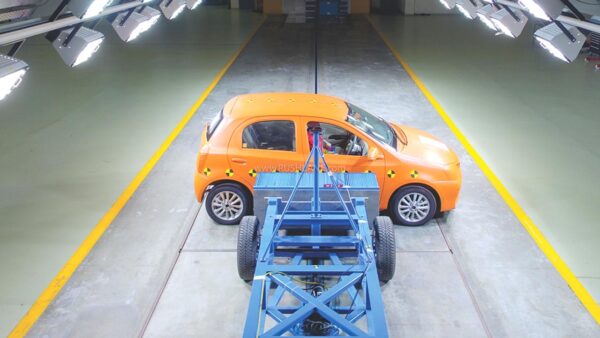
Except for the slight differences in adult occupant safety scores, Bharat NCAP and Global NCAP are almost identical
The Ministry of Road Transport and Highways recently launched Bharat NCAP which will be the de facto crash testing protocol for all Indian cars. Thus ending 10 years of Global NCAP agency with its Safer Cars For India campaign. GNCAP signed a ‘framework of cooperation’ MoU with CIRT (Central Institute for Road Transport).
In its 10 year run, Global NCAP conducted 62 tests of 50 models and the new Bharat NCAP will commence testing from October 1st, 2023. But how different is Bharat NCAP from Global NCAP? For starters, not much different. But there are changes in ranking protocols that will cause slight confusion. Let’s take a look.
How Bharat NCAP differ from Global NCAP?
Before diving into the differences, let’s get the similarities out of the way, for there are more similarities than differences.
1. ESC requirement
From 2024, all vehicles aiming for 3 stars or higher, should offer ESC as standard fitment. This is common with both BNCAP and GNCAP. Until then, ESC is optional without any regard for minimum fitment rate. That said, making ESC as standard is not a cakewalk simple. There are clauses stating ESC should be standard in bestselling variant or equal number of other variants.
Not just that, ESC should be made standard within two years of test results publication. Until made standard, ESC has to be a standalone optional extra without any bundling of other features. Think Mahindra XUV700 E variants for Rs. 50,000 extra.
2. Side pole impact test
Global NCAP’s updated test protocols and Bharat NCAP mandate some kind of head protection system (side and curtain airbag) to qualify for side pole impact tests. If a carmaker is aiming for 5 star crash rating, at least 50% of variants by the end of 2023, 70% by 2024, 90% by 2026 and 100% by 2026, should have head protection systems.
3. Pedestrian protection norms
Just like Global NCAP required UN127 pedestrian protection norms, Bharat NCAP requires all test vehicles to comply with AIS100 standards. Both AIS100 and UN127 are closely associated and sport similar attributes for pedestrian protection.
4. Child occupant protection
Now comes the big guns in any NCAP (New Car Assessment Program) tests. Both BNCAP and GNCAP have similar scoring and assessments for child occupant safety. 16 points for frontal impact test, 8 points for side impact test, 12 points for CRS installation and lastly, 13 points for vehicle assessment is common between both. The vehicle assessment includes integrated CRS, 3-point seat belt provision, ISOFIX mounts and more.
5. Adult occupant protection
Adult occupant protection score is the only place where Global NCAP and Bharat NCAP differ. Bharat NCAP has a maximum of 32 points, while Global NCAP had a maximum cap of 36 points in adult occupant protection. 16 points for front impact test and 16 points for side impact test is common between BNCAP and GNCAP.
But Global NCAP used to award two additional points for seatbelt reminders. Half point for each of the two front seatbelt reminders and 1 point for the inclusion of seatbelt reminders in 2nd row. BNCAP doesn’t have this model of awarding points for seatbelt reminders. That said, for all vehicles aiming for 3 star score or above, they have to have seatbelt reminders in the front at least.

